
A brochure published by the English firm, Birmingham Small Arms Company, in 1909 read in part: “The .310 Martini Miniature Rifle with long fore-end illustrated herein has been supplied in large numbers to the Australian Commonwealth Government for the use by cadets.” The military model being described along with a sporting version with a short forend was being offered for sale in two rimfire chamberings, .22 Short and .22 Long Rifle and three central fires, the .297/.230 Morris Short, .297/.230 Morris Long and the .310 Extra Long (.310 Rook). The brochure went on to rather optimistically describe the .310-caliber rifle as effective out to 500 yards. The .32-20 Winchester chambering was added in 1912.
The Peabody-Martini single-shot rifle was designed by Henry Peabody of Boston, Massachusetts, in 1869 and later improved a bit by a Swiss engineer by the name of Martini. It was adopted by several military powers, most notably Great Britain and Australia. Its initial chambering, the .577/450, was eventually replaced by the .303 British. The rifles were too large and heavy to be comfortably used by young cadets in grade schools, universities and military academies, so a scaled-down or “miniature” version as described by its English maker was adopted by the Australian government. Approximately 60,000 were purchased and the little rifle is often described today as the .310 Martini Cadet.
This story is from the {{IssueName}} edition of {{MagazineName}}.
Start your 7-day Magzter GOLD free trial to access thousands of curated premium stories, and 9,000+ magazines and newspapers.
Already a subscriber ? Sign In
This story is from the {{IssueName}} edition of {{MagazineName}}.
Start your 7-day Magzter GOLD free trial to access thousands of curated premium stories, and 9,000+ magazines and newspapers.
Already a subscriber? Sign In
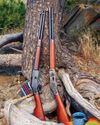
CIMARRON .32-20 Short Rifle & Carbine
In the heyday of Winchester Repeating Arms Company lever guns, it offered muskets, standard rifles, short rifles and saddle ring carbines.
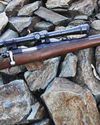
Remington's Model 722 and .222 Cartridge
It's easy enough to define what a varmint is, those pesky critters that tear up pastures, flower beds and all kinds of expensive crops people need for various reasons - most importantly, to make a living and/or something with which to feed themselves.

Coyote Bullets
What is Best for You?
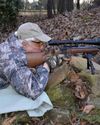
Remington's 5mm Rimfire Magnum
Shooting a Classic
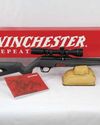
Winchester's New Wildcat
The Ultralight Rimfire Varmint Rifle

.223 Remington from .30-30 Winchester?
Multitasking for Varmints

LOADS FOR A .22 TCM
The .22 TCM first appeared commercially in 2012, chambered in a Rock Island Armory 1911-style handgun.
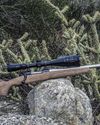
Everybody Loves Velocity
The 4,500-fps WSSM Project

A BOLT-ACTION FRANCHI 224 VALKYRIE
Testing New Loads
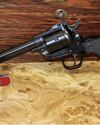
.22 Winchester Magnum Rimfire
Shooting Revolvers